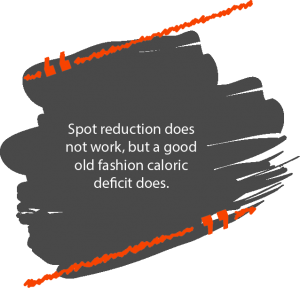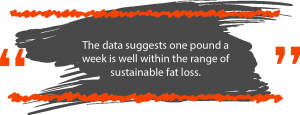
The Best Way to Develop Your Abs
Jan 18, 2018 mindpumpThere is no more coveted feature than a toned core and shredded abs. The pursuit of a lean midsection is something that has eluded many dedicated gym-goers for quite some time. Crunches, leg raises, plank, and repeat. We have all been there. Rolling around on the floor in a fit of spastic abdominal contractions, sweating profusely, DETERMINED to reveal that shredded six-pack, and while that might help a little – it’s not enough. No amount of crunches or any form of abdominal training for that matter can effectively reveal that chiseled midsection you want, in fact, it might already be there… it’s just hiding. Hiding you ask? That is right, your abs are probably already there, waiting to be uncovered.

You see, the truth of the matter is, most regular gym goers and weight trainees alike have more than enough abdominal musculature developed to have a great looking core. The problem is, there is a little too much subcutaneous fat on top of it. Now let me stop you there, doing thousands of crunches won’t mobilize the fat off of your abs and make it magically disappear. Spot reduction does not work, but a good old fashion caloric deficit does.
What is a caloric deficit?

A caloric deficit is defined as any shortage in the number of calories consumed relative to the number of calories required for maintenance of current body weight (energy homeostasis). This essentially means that a caloric deficit is eating fewer calories then you need for your body to maintain its current weight. The beautiful thing about a caloric deficit is that it allows your body to preferentially liquidate stored fat and reveal a leaner physique over time.
On a side note: It is worth noting that being in a caloric deficit does not mean muscle will not be burned as fuel during the deficit. While the body is preferential to muscle sparing in times of starvation, a simple resistance-training stimulus will not only prevent excessive muscle breakdown but also promote muscle growth (It might be less growth then when at caloric maintenance or in a surplus but it is a growth stimulus nonetheless).
How To Get Into a Caloric Deficit?:
Any reduction below your maintenance calories is enough to put you in a deficit, even something as small as 50 calories below maintenance is still considered a deficit, however, a number this small won’t reveal your abs anytime soon. In my years as a trainer and strength coach, I recommend all of my clients start with a deficit between 250 and 500 calories below their maintenance. The range is dependent on body size, gender and activity. In general, a smaller woman needs a smaller deficit then a larger man. I find this deficit range to be sustainable for long-term fat loss.

The general consensus amongst those in the know of applied physiology is that one pound of body fat (adipose tissue) contains approximately 3500 k/cal. That means that a 500 calorie daily deficit should result in close to one pound of fat loss per week. (3500 k/cal / 7 days of caloric restriction = 500 calories restricted daily). The data suggests one pound a week is well within the range of sustainable fat loss.
Below is a quick start guide for getting into a caloric deficit using both a linear form of caloric restriction (deficit) and an undulating model of caloric restriction (deficit). Let’s assume that our sample client has a caloric daily requirement of 2500 calories a day at maintenance, and we are looking to achieve a deficit that will get close to one pound of fat loss per week, so about 3500 calories.

As you can see above, the client is in a deficit that equates to 3500 calories below maintenance in BOTH scenarios. The first diet is more consistent, and while it is more rigid it is great for forming consistency and is more simple for someone new to dieting. HOWEVER, undulating calories like example two and having two days well below maintenance and two days at the end of the week at maintenance incorporates a technique known as “refeeding” that improves the hormonal environment for fat loss over time. So, if the top is for you, I recommend a two to three day “diet break” (exactly what it sounds like) every two to three weeks of dieting.
If you can stay in a caloric deficit long enough, you WILL reveal that shredded six-pack you have always wanted, and probably be a whole lot shredded everywhere else. It’s simply a matter of staying diligent, understanding that fat loss takes time, and playing the long game. But once you have revealed a six pack, I have noticed from experience, it is here to stay!
Tips for the Road:
1. Create a deficit of 250-500 calories.
2. Lift weights three to Six days per week.
3. Drink half your body weight in oz. of water at least.
4. Eat around 0.8-1.0 grams/lb of protein.
5. Incorporate tactics to get in extra movement throughout the day such as a scheduled walk at lunch, taking the stairs, or walking the dogs 2-3 more times per week.
Author: Daniel Matranga
NASM: CPT, CES, PES, WLS, SFS, WFS, GFS, YES
ACE: TES, OES, and MBS
- Scotto di Palumbo, A., et al., Effect of combined resistance and endurance exercise training on regional fat loss. J Sports Med Phys Fitness, 2017. 57(6): p. 794-801.
- Gwinup, G., R. Chelvam, and T. Steinberg, Thickness of subcutaneous fat and activity of underlying muscles. Annals of Internal Medicine, 1971. 74(3): p. 408-411.
- Krotkiewski, M., et al., The effect of unilateral isokinetic strength training on local adipose and muscle tissue morphology, thickness, and enzymes. Eur J Appl Physiol Occup Physiol, 1979.42(4): p. 271-81.
- Katch, F.I., et al., Effects of Sit up Exercise Training on Adipose Cell Size and Adiposity.Research Quarterly for Exercise and Sport, 1984. 55(3): p. 242-247.
- Kostek, M.A., et al., Subcutaneous fat alterations resulting from an upper-body resistance training program. Med Sci Sports Exerc, 2007. 39(7): p. 1177-85.
- Ramirez-Campillo, R., et al., Regional fat changes induced by localized muscle endurance resistance training. J Strength Cond Res, 2013. 27(8): p. 2219-24.
- Vispute, S.S., et al., The effect of abdominal exercise on abdominal fat. J Strength Cond Res, 2011. 25(9): p. 2559-64.
- Lee, S.Y. and D. Gallagher, Assessment methods in human body composition. Current opinion in clinical nutrition and metabolic care, 2008. 11(5): p. 566-572.
- Frayn, K.N., Regulation of fatty acid delivery in vivo, in Skeletal Muscle Metabolism in Exercise and Diabetes. 1998, Springer. p. 171-179.
- Stallknecht, B., F. Dela, and J.W. Helge, Are blood flow and lipolysis in subcutaneous adipose tissue influenced by contractions in adjacent muscles in humans? Am J Physiol Endocrinol Metab, 2007. 292(2): p. E394-9.








